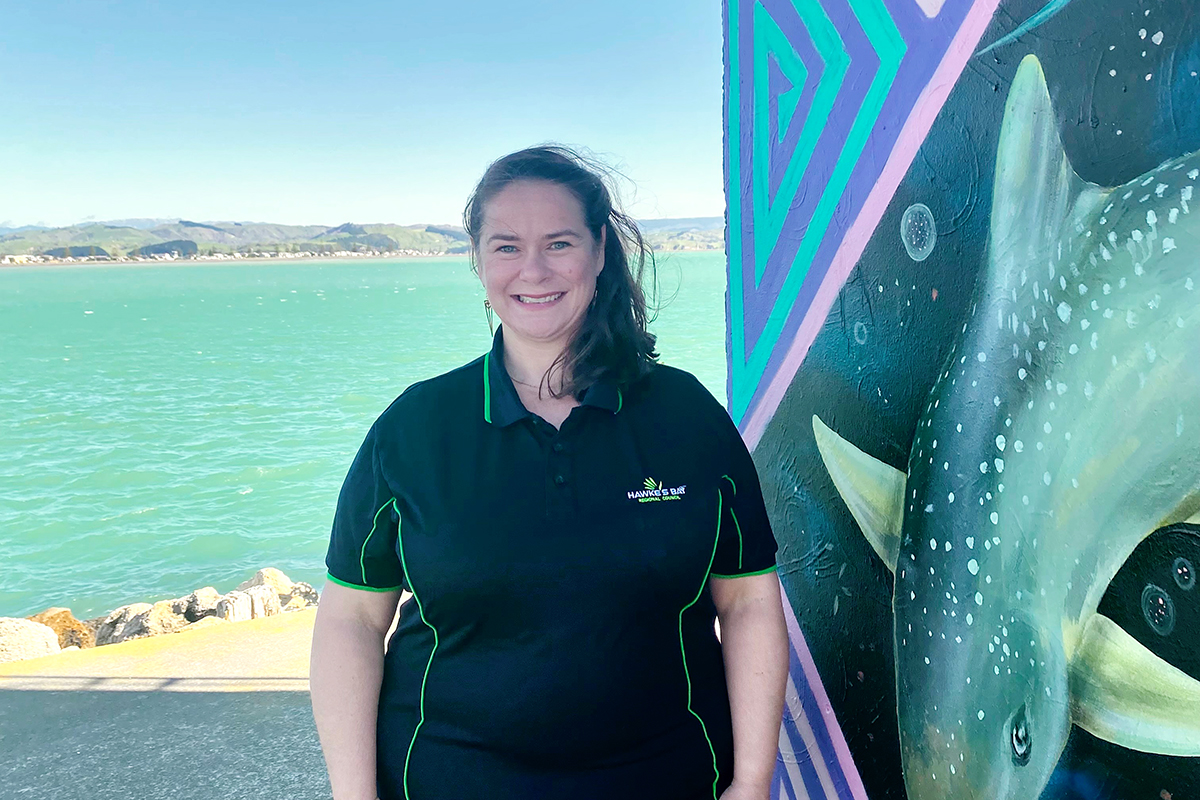Anna Madarasz-Smith is clear about what drives her as Hawke’s Bay Regional Council’s (HBRC) new science manager.
“It’s the ability to influence or create impact with the science we do.”
“Working as a scientist in a regional council means we get to work alongside our policy and operational people to make changes that are supported by our science.
Anna has an MSc in Marine Science from the University of Auckland and spent two years at Leigh Marine Laboratory studying inter-tidal communities, specifically green-lipped mussels. In late 2004 she joined HBRC and has been there ever since becoming Team Leader Marine, Air and Land Science prior to her latest role.
Now she is in charge of 18 scientists (with some vacancies). Her team encompasses people from as far away as Egypt, the US, China, Methven and Germany and they are working on projects ranging from studying our groundwater quality, to river flows, marine systems, sediment, phosphorus and nitrogen issues, air quality and more.
Making the science that underpins decisions about Hawke’s Bay’s environment accessible is another key driver for Anna.
“How do we get people to understand science and how do we build trust in our science?”
She is particularly proud of the three-yearly State of the Environment Report (and monthly updates) available on the HBRC website here.
“These provide a check-in on the condition of our waters, land, air and coast – and help us identify where things are not going well and what some of the stressors are.”
They are also a glimpse into some of the ”amazing” science going on.
She points to the three-dimensional mapping of the region’s aquifers as one such project. Using cutting-edge Danish SkyTEM technology, Simon Harper and his Hydrology & Groundwater Science team are collaborating to look at the insides of our aquifers.
“The Council will use this information to make better informed decisions around the management of groundwater resources.”
Anna was involved with a high-profile Sustainable Seas project researching environmental stressors in the Hawke’s Bay marine environment. She has now handed this over to Marine and Coast Senior Scientist, Becky Shanahan, as stage two goes on to model the impact of freshwater sedimentation and the loss of benthic (seabed) structure, and how the two interact.
Another project is taking water samples from our streams, rivers, estuaries and marine waters and identifying the DNA of every species within it – protozoa, bacteria, algae, fish – “so habitats important to vulnerable at-risk species can be identified and protected”.
Other research looks at our erosion issues in Hawke’s Bay, with sediment and phosphorus some key stressors on our aquatic systems.
“Our natural environment is so important, “ says Anna. “It is a core part of how we live our lives. When I am stressed I need to smell the ocean, for others it’s a bush walk or going to the river.”
A keen diver, she is particularly aware of how our land impacts our oceans. “The water that you wash your car in or hose your paintbrush off with will go into your local river or harbour without any treatment whatsoever. The sediment that you generate because you want to do some landscaping, or you’re building a house, that is all going to go into the waterway, then our estuaries and marine space.
“Every single person, whether they’re urban or rural – we’ve all got a responsibility to understand how our actions impact our environment.”
Anna grew up in Auckland and spent her summers swimming in the sea at Orewa and Kawau Island on family holidays (her father was an immigrant from Hungry, hence her surname).
As a child she heard the story of Old Blue, the little Chatham Island robin who saved its species from extinction with the help of some basic science from conservationist Don Merton, and something clicked in her.
“I remember admiring the quiet contribution he made, and that he did the right thing.”
Now Anna is married to fellow marine scientist Shade Smith, Te Rarawa, who works with Ngāti Kahungunu, and in private practice, and they both manage their jobs around bringing up three young children.
Looking ahead, Anna sees her leadership role as making sure the HBRC Science team is feeling valued and that the passion they hold for their work is understood, and they continue to deliver the science information as they see it.
“Science is always changing,” she says , “but I want to know our information has stood the test of time, that it was the right information at the right time.”
Public Interest Journalism funded through NZ On Air


Go Anna! A passionate scientist doing critical work for our community, & most importantly for her new role, a fantastic communicator!
Congratulations Anna, well done and keep up the good work protecting Hawke’s Bays biodiversity.
Congratulations Anna. Always appreciated your presentations. Very clear and pulls no punches.